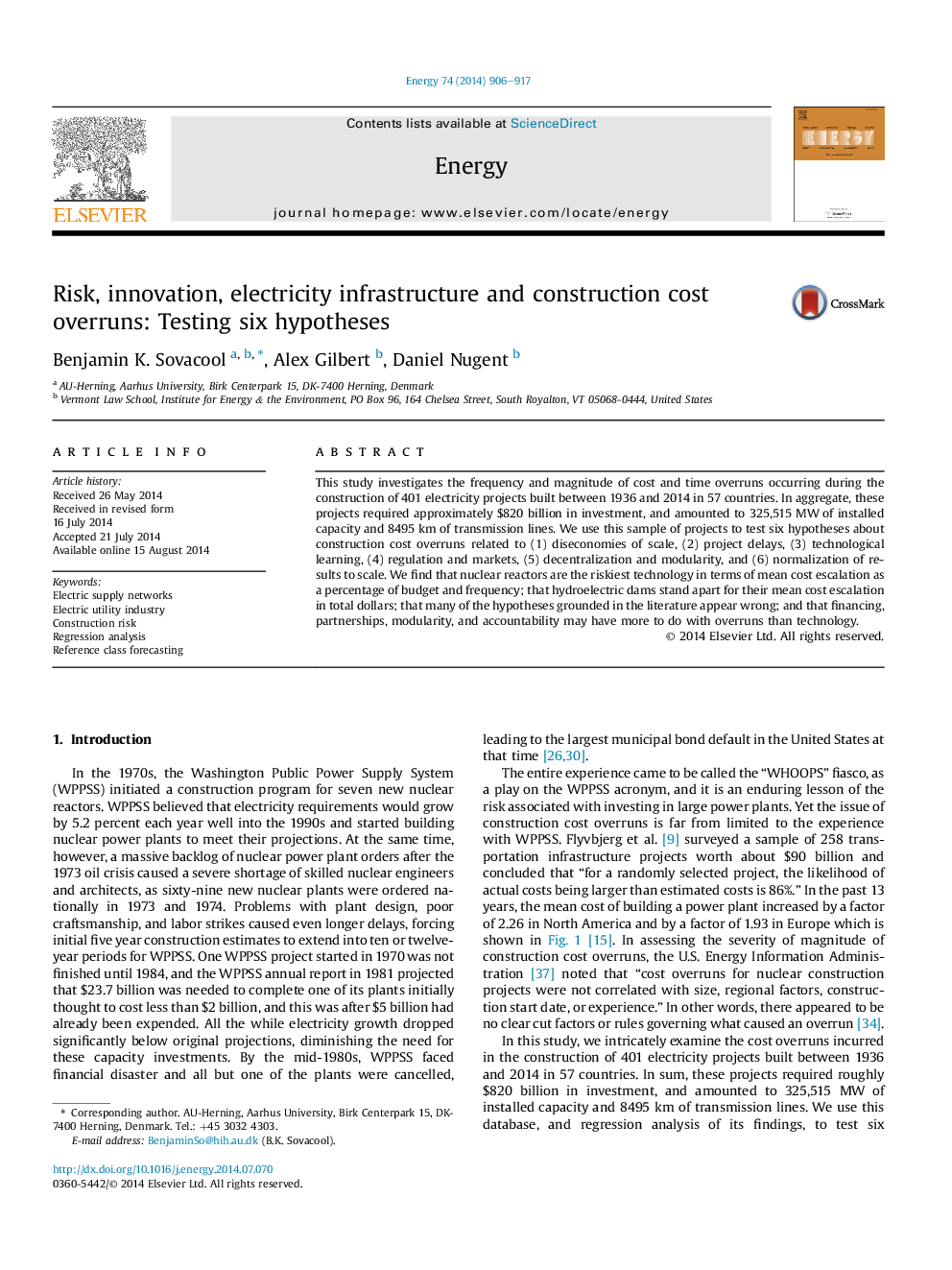| Article ID | Journal | Published Year | Pages | File Type |
|---|---|---|---|---|
| 1732523 | Energy | 2014 | 12 Pages |
•Many hypotheses about construction overruns grounded in the literature appear wrong.•Nuclear reactors are the most prone to cost overruns as a percentage of budget and frequency.•Hydroelectric dams stand apart for their mean cost escalation in total dollars.•Solar and wind energy systems are least at risk to cost overruns.
This study investigates the frequency and magnitude of cost and time overruns occurring during the construction of 401 electricity projects built between 1936 and 2014 in 57 countries. In aggregate, these projects required approximately $820 billion in investment, and amounted to 325,515 MW of installed capacity and 8495 km of transmission lines. We use this sample of projects to test six hypotheses about construction cost overruns related to (1) diseconomies of scale, (2) project delays, (3) technological learning, (4) regulation and markets, (5) decentralization and modularity, and (6) normalization of results to scale. We find that nuclear reactors are the riskiest technology in terms of mean cost escalation as a percentage of budget and frequency; that hydroelectric dams stand apart for their mean cost escalation in total dollars; that many of the hypotheses grounded in the literature appear wrong; and that financing, partnerships, modularity, and accountability may have more to do with overruns than technology.
